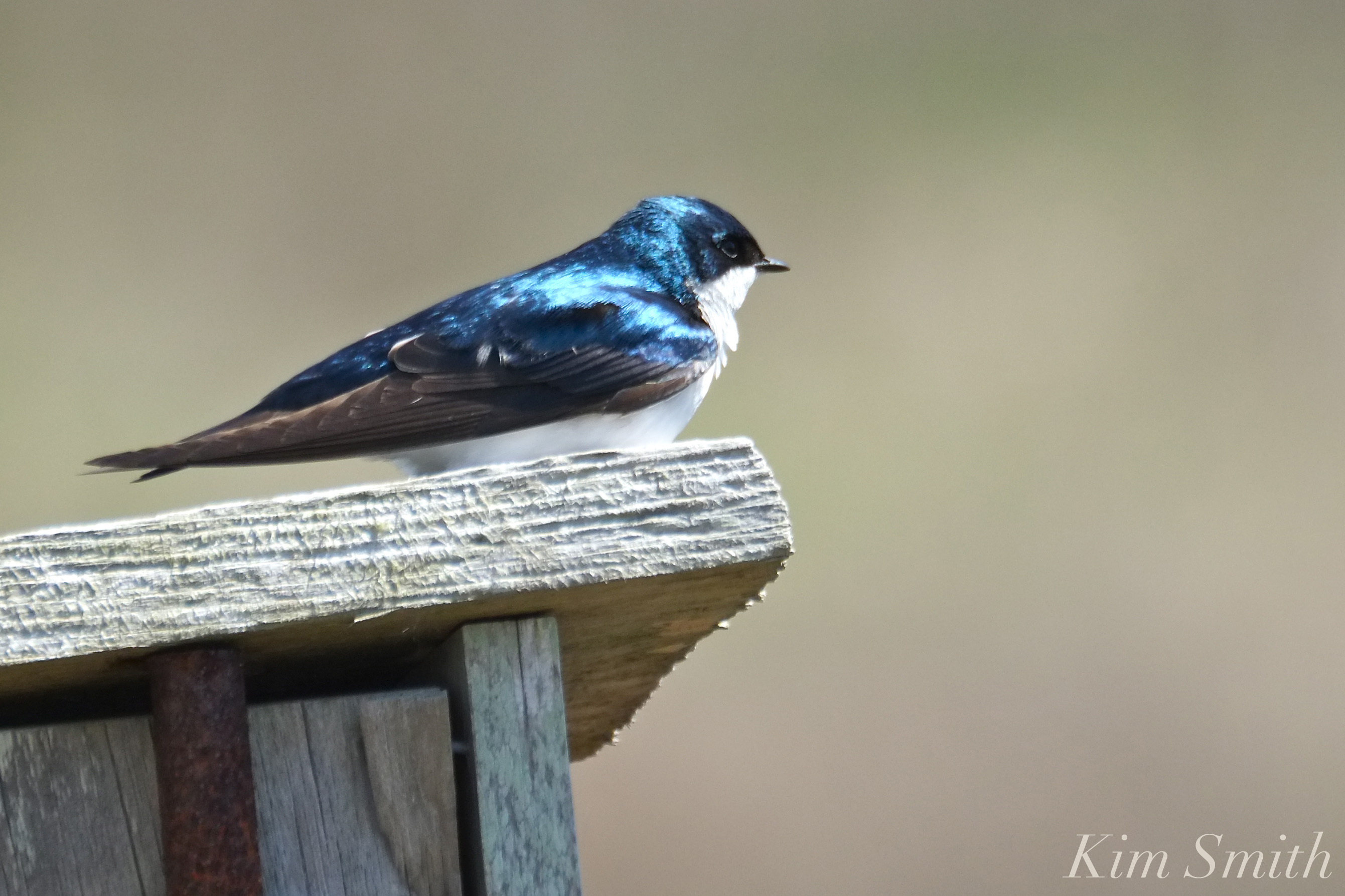During the month of May, Massachusetts is graced daily with species arriving from their winter homes. Some need to fortify for the journey further north, to the boreal forests, bogs, and tundra of Canada and Alaska. Some will nest and breed in Massachusetts, finding suitable habitat along the coast, and in the marsh, scrub, shrub, forest, and grassland found throughout the state. For several projects on which I am currently working, I have been exploring wildlife sanctuaries along the Massachusetts coastal region. Here is just a sampling of some recently spotted migrants, and it’s only May 4th. Lots more to come!
 Biggety Brant ~ This Brant Goose appeared to be the bossy boots of his gaggle, chiding, nipping, and vocally encouraging the group along. A large of flock of approximately 40 Brants was recently reported by readers Debbie and Dan, seen at Back Beach in Rockport. The Brants are heading to the wet, coastal tundra of the high Arctic. No other species of goose travels as far north or migrates as great a distance as do Brants.
Biggety Brant ~ This Brant Goose appeared to be the bossy boots of his gaggle, chiding, nipping, and vocally encouraging the group along. A large of flock of approximately 40 Brants was recently reported by readers Debbie and Dan, seen at Back Beach in Rockport. The Brants are heading to the wet, coastal tundra of the high Arctic. No other species of goose travels as far north or migrates as great a distance as do Brants.
 W is for Wading Willet. A PAIR were well hidden in the marshy grass! Both the flesh and the eggs of Willets are considered tasty. They were nearly hunted to extinction, saved only by the Migratory Bird Treaty Act of 1918. Willets breeding in Massachusetts is nothing short of a miracle. Notice how closely they resemble Greater and Lesser Yellowlegs; all three belong to the Genus Tringa.
W is for Wading Willet. A PAIR were well hidden in the marshy grass! Both the flesh and the eggs of Willets are considered tasty. They were nearly hunted to extinction, saved only by the Migratory Bird Treaty Act of 1918. Willets breeding in Massachusetts is nothing short of a miracle. Notice how closely they resemble Greater and Lesser Yellowlegs; all three belong to the Genus Tringa.
 Y is for Yawping Yellowlegs. Both Greater and Lesser Yellow are seen in Massachusetts marshes at this time of year. Greater Yellowlegs have a loud, distinct call, which they utilize often. The Greater Yellowlegs are feeding on tiny crustaceans, killfish, and minnows to fortify for the journey to the boggy marshes of Canadian and Alaskan coniferous forests.
Y is for Yawping Yellowlegs. Both Greater and Lesser Yellow are seen in Massachusetts marshes at this time of year. Greater Yellowlegs have a loud, distinct call, which they utilize often. The Greater Yellowlegs are feeding on tiny crustaceans, killfish, and minnows to fortify for the journey to the boggy marshes of Canadian and Alaskan coniferous forests.
 Piping Plover Piping ~ We should be proud that our state of Massachusetts has the greatest record of Piping Plover recovery. I recently saw a bar graph at a lecture presentation, given by Dave Rimmer at Parker River National Wildlife Refuge, which illustrated that the recovery rate has flatlined in Canada and New Jersey, and diminished in the Great Lakes region.
Piping Plover Piping ~ We should be proud that our state of Massachusetts has the greatest record of Piping Plover recovery. I recently saw a bar graph at a lecture presentation, given by Dave Rimmer at Parker River National Wildlife Refuge, which illustrated that the recovery rate has flatlined in Canada and New Jersey, and diminished in the Great Lakes region.
 T is for Tree Swallow Tango ~ Males arrive on the scene prior to the females. The courtship ritual involves the gents showing the ladies possible nesting sites.
T is for Tree Swallow Tango ~ Males arrive on the scene prior to the females. The courtship ritual involves the gents showing the ladies possible nesting sites.
Tree Swallow preparing for takeoff.




